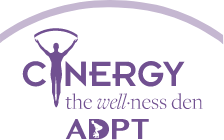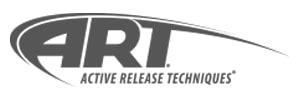
Active Release Techniques® (ART) is a patented, state of the art, movement based manual therapy system administered by certified professionals to target soft tissue structures of the body. Soft tissue structures targeted by ART include muscles, tendons, ligaments, fascia and nerves. The main goal is to reestablish proper motion between these structures. This technique can help to increase blood flow, release adhesions and scar tissue, and aims to increase mobility while decreasing dysfunction. Headaches, back pain, carpal tunnel syndrome, shin splints, shoulder pain, sciatica, plantar fasciitis, knee pain and tennis elbow are just a few of the many conditions that can be resolved quickly and permanently with ART. A certified Cynergy Physical Therapy provider can use this technique to help treat patients with acute, chronic, overuse, repetitive strain injuries and postoperative cases.
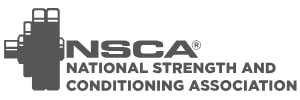
Certified Strength and Conditioning Specialist® (CSCS) is a specialty certification that is obtained through the National Strength and Conditioning Association (NSCA). With this certification, evidence-based research is used to train athletes and treat patients with the goal of improving strength by overloading the musculoskeletal system and ultimately improving athletic performance. Certified Strength and Conditioning Specialists can also design sport specific training programs, provide nutritional advice and injury prevention techniques.
Concierge Physical Therapy brings the expertise of our certified clinicians to the comforts of your own home or office, allowing you the flexibility and convenience of licensed therapists to provide individual and specialized care.
Cupping therapy is a manual therapy technique used to reduce muscle tension, promote circulation, and accelerate healing. By placing specialized cups on the skin to create gentle suction, cupping helps lift tissue, improve blood flow, and release fascial restrictions. It’s commonly used by physical therapists to support recovery from injuries, decrease pain, and enhance mobility.
Benefits of Cupping Therapy
-
Reduces muscle tightness and soreness
-
Improves circulation and lymphatic flow
-
Releases fascial adhesions to restore movement
-
Speeds recovery from overuse and soft tissue injuries
-
Promotes relaxation and reduces stress-related tension
Ideal For:
-
Athletes with tight or overworked muscles
-
Individuals with chronic neck, back, or shoulder pain
-
Post-injury soft tissue recovery
-
Myofascial pain syndrome
-
Enhancing other manual therapies or exercise-based rehab
Cupping is often integrated into a broader physical therapy plan to complement stretching, strengthening, and manual techniques—helping you heal faster and move better.
A shoe insert molded specifically to each individual foot, custom orthotics are used to help position your feet to improve structural and functional characteristics creating a more efficient position and giving more support to the foot and ankle. They may be used to help treat a number of conditions including flatfeet, neuromas, plantar fasciitis, runner’s knee, and other ailments.
We provide individualized evaluations, screenings, & functional assessments.
We use dance-art-specific evaluations like pre-pointe screenings.
We help improve technique and outcomes of return to performance after an injury.
We specialize in injury prevention, personalized education and training, including post-injury rehabilitation.
Some examples of Dance Medicine: Pelvic floor rehabilitation, manual therapy, injury prevention workshops, Pilates apparatus, plyometrics, strength training, weightlifting, IASTM, return-to-stage, & post-operative rehabilitation.
Functional Range Conditioning (FRC®) is a trademarked system of mobility and joint control training. FRC® aims to increase ones active, usable ranges of motion by simultaneously improving articular mobility, strength/resilience, and neurological control. By improving your active ranges of motion, you improve your athletic performance and prevent injury or re-injury.

The Functional Movement Screen (FMS) is an evaluative tool used to help clinicians and healthcare professionals screen individuals for risk of injury and/or dysfunctional or performance limiting movement patterns. The FMS consists of seven screening tests and three clearing tests which are used to identify asymmetries which result in functional movement deficiencies. This clinical tool is suitable for all healthy, active individuals including young and middle aged individuals as well as elite, collegiate and professional athletes. A certified Cynergy Physical Therapy provider can use the FMS to help an individual identify physical limitations, optimize physical health and performance, and to prevent injuries before they occur.
Geriatric Physical Therapy is a field of practice that focuses on the development and implementation of a treatment plan specifically for the older population (>65 years old). There exists a direct correlation between increasing age and the loss of muscle mass, bone density, and the increased risk of developing chronic diseases. However, research consistently demonstrates how such adaptations can be combated by regular exercise and an active lifestyle. Geriatric care provided by Cynergy physical therapists aims to provide a whole-body strengthening approach that is function based and specific to the needs of older individuals who may or may not be affected by comorbidities. Our goal is to empower the geriatric population to take control of their lives and to not let age be a factor in determining what they are physically capable of achieving.

The Graston Technique® is a form of manual therapy known as soft-tissue instrument-assisted mobilization. It is one of a number of manual therapy approaches that uses instruments with a specialized form of massage/scraping the skin gently. The instruments, usually steel-based, are used to identify and treat soft tissue restrictions and scar tissues that are contributing to a patient’s symptoms. Graston is designed to restore normal range of motion, decrease fascial restrictions, eliminate pain, and restore function to an area of restriction. It is complimented with therapeutic exercise and stretching to treat both acute and chronic pain.
Hand therapy is the treatment of conditions of the upper extremity including fingers, hand, wrist, elbow, and shoulder. Treatments include fabricating custom orthotics, scar management, manual therapy, custom exercise programs, desensitization techniques, strengthening, ergonomic, neuromuscular retraining, lymphedema treatment of the upper extremity and postural training. Hand therapists see a variety of diagnoses including carpal tunnel syndrome, arthritis, De Quervain’s tenosynovitis, distal radius fractures, tennis elbow, flexor and extensor tendon repairs and frozen shoulder. There is at least one Certified Hand Therapist (CHT) at each of Cynergy’s locations. A CHT can be an occupational or physical therapist who specializes in treating individuals who have complex injuries of the hand and upper extremity. To obtain this credential, the therapist must have practiced a minimum of three years, accumulated at least 4,000 hours of treatment in upper extremity disorders, and have passed a certified examination. CHT’s tend to work closely with orthopedic hand surgeons to allow their patients to return to their highest level of function.
Kettlebell training involves the use of a cast-iron or steel ball with a handle to perform dynamic movements like swings, presses, squats, and carries. Unlike traditional weights, kettlebells allow for more fluid, full-body motion, making them ideal for improving functional strength, stability, and mobility.
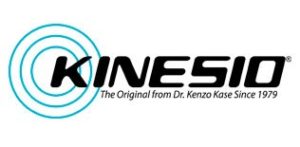
The Kinesio Taping® Method (muscle taping) is a definitive rehabilitative taping technique that is designed to facilitate the body’s natural healing process while providing support and stability to muscles and joints without restricting the body’s range of motion. It also provides extended soft tissue manipulation to prolong the benefits of manual therapy administered within the clinical setting. Kinesio Tape® is safe for populations ranging from pediatric to geriatric, and successfully treats a variety of orthopedic, neuromuscular, neurological and other medical conditions.
Lymphedema is a condition when the lymphatic fluid cannot be adequately drained from the limb region due to damage to the lymph nodes from surgical intervention, cancer treatment or infection. Management of mild to severe swelling in the limbs includes the prescription of specific exercises, light skin-tractioning massage techniques following the lymphatic pathways, and the use of low-compression garments.
Manual Therapy is an umbrella term for skilled, hands-on treatment techniques performed by physical therapists to treat musculoskeletal pain and dysfunction. These include both passive (therapist performed) and active (therapist and patient perform collaboratively) techniques, which are aimed at restoring proper function to soft tissues and joints. Manual therapy is most effective when the techniques are targeted to the individual patient’s needs and coupled with neuromuscular re-education and therapeutic exercise.
Neuromuscular reeducation is one technique used by physical therapists to facilitate the return of normal movement in individuals with neuromuscular impairments. Muscle movement patterns are affected when nerves or muscles experience damage or injury as a result of trauma, medical conditions, and neurological conditions.
Occupational Therapy is an evidence-based profession that assists individuals of all ages to gain and/or maximize independence with all daily activities (occupations) in order to promote health and prevent injury, illness, and disability. Occupations range from basic self-care activities such as eating, dressing and bathing to more instrumental activities such as work, play and leisure. Through a holistic approach that carefully considers patient-environment interactions, occupational therapists strive to restore patients’ participation in all meaningful activities through the use of therapeutic exercises and activities, workplace interventions and activity modification and adaptation.
At Cynergy, we welcome patients with any same-day splinting needs. Often, after an upper extremity surgery, your doctor will refer you to a Certified Hand Therapist (CHT) to fabricate a custom orthosis for your surgical site. Splints (orthotics) are used to protect post-surgical sites, support or immobilize painful joints and muscles, and assist with nerve compression. The CHT’s at Cynergy use thermoplastic material to mold custom splints for the finger, hand, wrist or elbow that are tailored to the specific needs of each patient. The process from start to finish takes 20-30 minutes and our patients leave same day with their newly fabricated, customized splint.
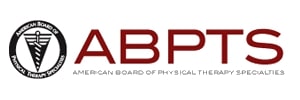
An Orthopedic Clinical Specialist (OCS) is a physical therapist recognized by the American Board of Physical Therapy Specialties (ABPTS) as an individual who holds a clinical specialization in treating orthopedic injuries. OCS clinicians maintain an expertise for treating bones, muscle, cartilage, tendon, ligament, and joint injuries. Orthopedic Clinical Specialists utilize the latest research and technologies available to provide an evidence-based approach to rehabilitation.
Pain management is a primary goal of physical therapy with multiple conservative strategies employed to enhance quality of life. Strategies may include manual therapy, exercise, postural training and education to promote optimal healing and reduction of pain. Your therapist will work you and the rest of your medical team to develop an appropriate plan of care that addresses your specific needs and goals.
At Cynergy Physical Therapy, we work with pediatric patients of all ages, from newborns to 18 years of age. Some common pediatric conditions we treat at Cynergy include scoliosis, torticollis, pediatric fractures and splints, concussion management, severs disease, Osgood Schlatter disease, patella tendonitis, patellofemoral pain, and other congenital musculoskeletal disorders.
The pelvic floor refers to both the male and female muscles that form a hammock from the pubic bone to the tailbone. This structure acts as the basement to our core musculature and assists in maintaining proper posture, supporting our organs and to help control bladder, bowel and sexual function. These muscles can become painful and result in failure of function if they are overused. Pelvic floor dysfunction is an umbrella term that refers to a wide range of problems that occur when the pelvic floor is not functioning properly and is too tight and/or weak. Often there is accompanying dysfunction of other orthopedic structures such as the lumbar spine, sacroiliac joint, coccyx, and/or hip joint. Pelvic floor therapy can consist of both internal and external manual therapy including trigger point release, myofascial release, visceral manipulation, and soft tissue mobilization. Therapy can be enhanced by the following modalities: ultrasound, biofeedback, electrical stimulation, cold laser, and transcutaneous electrical nerve stimulation.
At our New York City clinic, we offer targeted physical and occupational therapy services for musicians of all levels and instrument backgrounds. Our experienced therapists understand the unique physical demands of musical performance and provide highly individualized care designed to enhance playing longevity, prevent injury, and support recovery from common musician-related conditions.
Using a holistic, evidence-based framework, our therapists assess the interaction between your body, environment, and instrument. We analyze playing technique and posture to identify root causes of pain or dysfunction and develop personalized strategies for:
-
Preventing repetitive stress injuries
-
Improving body mechanics and joint efficiency
-
Reducing tension and unnecessary muscle strain
-
Strengthening and conditioning key muscle groups
-
Enhancing technique for better control and performance endurance
Commonly treated conditions include tendonitis, nerve compression syndromes (e.g., carpal tunnel, cubital tunnel), osteoarthritis, and trigger finger. We work with musicians who play a wide variety of instruments—from strings and woodwinds to brass and percussion.
Pilates is a century old method developed by the late Joseph H. Pilates with a focus on core strength, breath, balance, concentration, control, flow, centering, alignment and precision. Mr. Pilates developed specialized equipment, termed apparatus, which may be utilized to both support and challenge the user’s dynamic strength and control. Through skilled instruction, patients can benefit from the increased tactile feedback of working on the Pilates apparatus. This offers a unique learning and recovery experience for our patients and may be used as a segue to a post-physical therapy maintenance program. Cynergy’s Bridge Program was designed to assist interested clients move from PT/therapeutic exercise back into recreational exercise.
Physical or Occupational Therapy is usually indicated after an orthopedic surgical procedure. The therapists at Cynergy Physical Therapy will customize a treatment plan tailored to suit your specific needs with your goals in mind. We consider your estimated timeline of recovery, will consult with your physician to discuss post-op protocols and guide you to restore range of motion and strength without compensation and prevent re-injury during the recovery process. As always, care is given one-on-one, just you and your therapist for the duration of your care.
Postural issues and imbalances can contribute to joint and muscle pain, muscular tension, and even decreased internal organ function. Postural retraining or therapy is a natural method of pain relief that uses exercises to correct skeletal misalignment. Proper structural alignment allows the body to function efficiently, without pain, tension, or undue fatigue. By rebalancing the muscles through an individualized program of stretching and strengthening, the therapists at Cynergy address the root cause of many types of pain. Posture therapy can address conditions such as headaches, sciatica, tendonitis, osteoarthritis, neck tension and pain, tight shoulders, jaw tension and pain, bursitis and low back pain. Correcting your posture can also help prevent injury during athletic activities by allowing the joints and muscles to function as they were designed.
Support for Every Stage of Motherhood
At Cynergy Physical Therapy, we understand the physical demands and changes that come with pregnancy and postpartum recovery. Our prenatal and postnatal physical therapy programs are designed to help you feel strong, supported, and pain-free through every phase of your journey.
Prenatal Physical Therapy
Pregnancy can bring discomfort from postural shifts, weight gain, and hormonal changes. Our prenatal therapy helps manage:
-
Back, hip, and pelvic pain
-
Postural misalignment
-
Joint and muscle discomfort
We focus on improving mobility, reducing pain, and preparing your body for childbirth through safe, targeted exercises—including pelvic floor and core strengthening.
Postnatal Physical Therapy
After delivery, your body needs time and support to heal. Our postpartum therapy helps address:
-
Diastasis recti
-
Pelvic floor dysfunction
-
Core weakness and postural issues
We provide personalized recovery plans that restore strength, function, and confidence—helping you return to daily life with comfort and control.
Preoperative Care, also known as “pre-habilitation” or “prehab”, is a helpful prerequisite for individuals who have an injury that requires surgery in the future. The goal of prehab is to set the individual up for a successful surgical procedure and recovery process. Prehab can help reduce recovery time, improve chances of positive outcomes, and return you to your prior level of strength and mobility faster. Research shows that prehab significantly reduces the time spent in post-operative care. Prehab will mentally prepare you for surgery, reduce pain and inflammation, restore range of motion, improve muscular control of the injured joint, normalize movement patterns prior to your surgery, help you gain a good understanding of the exercises that you will perform immediately after surgery, and improve overall well-being and fitness.
PNF is a neuromuscular re-education approach that stands for Proprioceptive (perception or awareness of the position and movement of the body) Neuromuscular (pertaining to the nerves and muscles) Facilitation (to make easier) that is based on the principles of anatomy, physiology, growth and development, kinesiology, behavior sciences, and neurophysiology to improve the quality and efficiency of movement. The goal of the treatment is to facilitate a patient to achieve a movement or posture which has been identified to be in a state of dysfunction.
Return-to-Play (RTP) Physical Therapy is a specialized and structured rehabilitation process that helps athletes and active individuals safely resume sports and physical activities after an injury. Whether you’ve undergone surgery or are recovering through conservative treatment, our RTP programs focus on restoring full function, minimizing reinjury risk, and building both physical and mental readiness.
At Cynergy Physical Therapy, our expert Running & Gait Analysis program is designed for runners of all levels—whether you're just getting started or training for your next marathon. Using advanced video technology and clinical expertise, we assess your running mechanics to enhance performance, prevent injuries, and help you run more efficiently.
What We Offer
Our licensed physical therapists analyze your movement patterns using slow-motion video, motion capture, and functional testing to identify imbalances and inefficiencies that could lead to injury or hold you back.
Key Program Features
-
Detailed Gait Analysis: Evaluate foot strike, stride, posture, and joint motion.
-
Injury Prevention & Recovery: Address common running injuries like shin splints, runner’s knee, and plantar fasciitis.
-
Strength & Mobility Training: Build a resilient, balanced body for optimal performance.
-
Endurance & Performance Coaching: Tailored pacing and conditioning strategies to meet your running goals.
-
Footwear & Orthotic Guidance: Ensure your shoes support your form and help prevent injury.
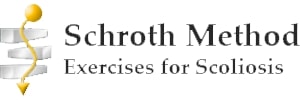
The Schroth Method is a specialized treatment for scoliosis that offers a conservative way to manage scoliosis by using Physiotherapy Scoliosis Specific Exercises (PSSE). The program consists of curve specific, individualized, three-dimensional, corrective postural and breathing techniques. Patients of all ages may benefit from Schroth therapy. During the session, the patient will perform customized exercises that focus on elongation, derotation, and stabilization of the spine.

The Selective Functional Movement Assessment (SFMA) is a comprehensive assessment used to classify movement patterns, identify regions for further local biomechanical examination, and ultimately, direct manual therapy and therapeutic exercise intervention. It is a system that helps incorporate a movement baseline into a musculoskeletal examination to create a more pattern-specific perspective of how each individual patient moves in relationship to their anatomical information and their medical diagnosis. At Cynergy Physical Therapy, we have certified SFMA therapists who will use this evaluative tool in order to design the ideal personalized treatment plan tailored to suit your specific needs.
Sports Medicine Physical Therapy involves a functional movement evaluation, prevention, treatment and rehabilitation of the athlete with specifics to their sport. This specialization is also concerned with performance enhancement. This type of therapy is meant to teach preventative techniques to athletes, families, coaches and even other physical therapists. Sports physical therapists work with doctors to develop programs to help athletes manage pain and recuperate from injuries. They also play a role in assessing when someone is ready to return to physical activity.
The purpose of Sports Performance Enhancement Physical Therapy is to bridge the gap between medicine/physical therapy and fitness/performance training. For clients and patients who desire to make bigger gains than you would generally expect in a traditional physical therapy setting, Cynergy provides a safe place for patients to train under physical therapists who have advanced training in strength and conditioning, functional training and movement, and kinesiology. With this extensive training and experience, our physical therapists help athletes reach their potential and ultimately improve their athletic performance.
At Cynergy Physical Therapy in NYC, we offer specialized strength training programs tailored for individuals with osteoporosis and osteopenia. Led by licensed physical therapists, our evidence-based approach helps improve bone density, strengthen muscles, and reduce the risk of falls and fractures—all in a safe and supportive environment.
Why Strength Training Matters
Osteoporosis causes bones to become weak and brittle, increasing fracture risk—especially in the hips, spine, and wrists. Research shows that supervised resistance training can help counteract bone loss and promote long-term skeletal health.
Temporomandibular Joint Dysfunction (TMJ) is a blanket term used in describing any problem relating to the temporomandibular joint or jaw. Such problems can include myofascial pain that involves pain and discomfort in muscles of the jaw, an internal derangement such as a displaced disc or a dislocation, and/or inflammatory or degenerative changes resulting in arthritis. Our physical therapists who treat TMJ dysfunction can identify range of motion restrictions, muscle tension, and problems with joint mechanics that contribute to TMJ dysfunction. They treat such impairments by utilizing deep tissue massage and joint mobilizations to promote muscle relaxation and increased mobility, prescribing exercises to strengthen muscles of the jaw and cervical spine, and providing education on lifestyle modifications to prevent exacerbation of symptoms and future injury.
At Cynergy Physical Therapy in NYC, we integrate Tindeq Load Readings, a cutting-edge wireless force measurement tool, into our treatment plans to deliver data-driven rehabilitation and performance enhancement. This advanced technology allows for real-time tracking of strength, force, and load—offering unmatched precision in both rehab and training.
What Is Tindeq?
Tindeq is a compact, wireless device that accurately measures force output, making it ideal for tracking recovery, detecting imbalances, and optimizing training for athletes and active individuals.
Key Benefits
-
Objective Strength Testing: Quantify muscle performance and fatigue
-
Data-Driven Rehab: Track your progress session-by-session
-
Injury Prevention: Identify and address asymmetries early
-
Performance Optimization: Monitor sport-specific power and force output
Sometimes called corrective exercise, therapeutic exercise is one of the most effective treatment tools therapists and patients have to reduce pain and disability. Therapeutic exercise refers to instructing the patient on the performance of body movements or exercises designed to restore normal function to injured or impaired joints or tissues. The goal of therapeutic exercise is often to regain flexibility, strength and endurance, but may also include balance training and movement re-education of painful or difficult activities in order to improve a patient’s ability to perform daily movements or tasks.
Occupational and physical therapists provide services that enhance and enable their clients to participate in meaningful activities by utilizing specific practice frameworks that guide their judgment in designing highly individualized intervention plans that deeply consider the interactions between patients, their needs, their environment, and the meaningful activities they engage in.
Trigger points are discrete, focal, hyperirritable spots located in a taut band of skeletal muscle. They produce pain locally and in a referred pattern and often accompany acute or chronic musculoskeletal disorders. Manual therapy is used to release trigger points helping to decrease discomfort and improve range of motion. Trigger point release is typically followed-up by range of motion and postural exercises to help decrease the recurrence.
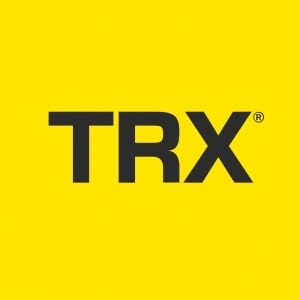
Total Body Resistance Exercise (TRX®) is a suspension based exercise system that requires the use of the TRX Suspension Trainer; a performance training tool that leverages gravity and the user’s body weight to complete hundreds of exercises. Suspension Training bodyweight exercise develops strength, balance, flexibility and core stability simultaneously. Several Cynergy Physical Therapists are trained in TRX exercises.
Vestibular Rehabilitation is specialized form of therapy intended to alleviate both the primary and secondary problems caused by vestibular (balance) disorders. It is an exercise-based program primarily designed to reduce vertigo and dizziness, gaze instability, and/or imbalance and falls.
At Cynergy Physical Therapy & Sports Performance, we provide a safe, supportive, and empowering environment where female athletes can train, recover, and thrive under the care of licensed health professionals. Our Women’s Sports Performance Program is designed to meet the unique physical and physiological needs of female athletes across all levels and sports.
We don’t just treat injuries — we prevent them, enhance performance, and support whole-athlete health, including pelvic floor dysfunction and osteoporosis-related strength needs.
